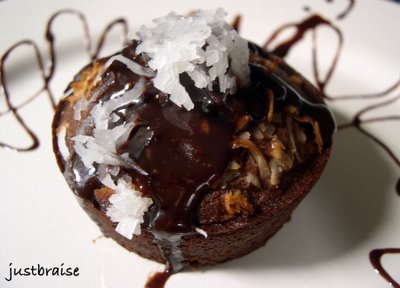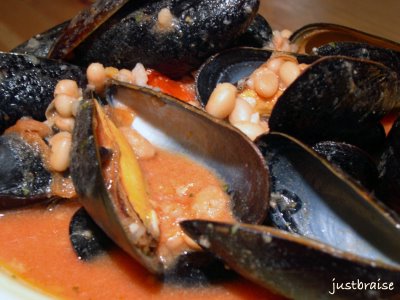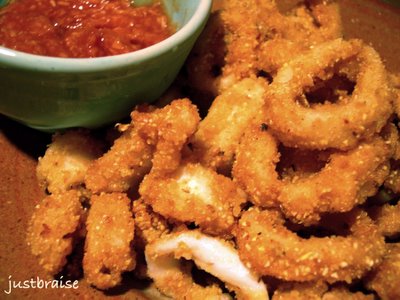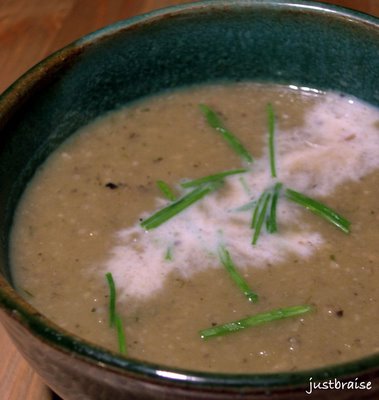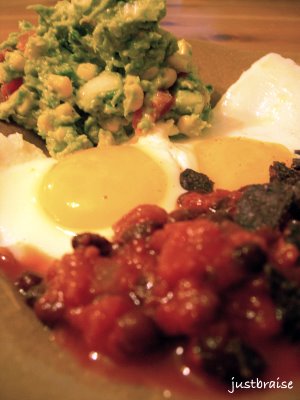Loose Ends Lentil Soup

Soups are an all too easy favorite of mine: they are inexpensive; require little prep; are hearty and healthy; involve few ingredients to make delicious; are easy to alter with a little cream or blender; and are a fabulous way to clean out the refrigerator/ cabinets before a grocery spree. They are a leftover-lover’s dream: make them in large batches and freeze in single-size servings easily to transport to work for a no-think lunch your co-workers will drool over; perfect with some fresh bread.
Once the basics of making a soup stock are understood, whether it is meat or vegetable, there is no limit to one’s soup making abilities: A little less of that here, more of this there, and voilà, a new creation with little effort.
Growing up, a favorite household food was turkey. A golden-roasted turkey my mother would prepare in the late afternoon and have ready for us kids upon our arrival home from school. Friends would join us and we would pass through the door attempting to guess what mom had made. The favorite of mine was always turkey because it meant a whole week of fresh turkey sandwiches. It meant warm turkey with smooth, buttery mashed potatoes. It eventually meant my all-time favorite: soup.
It is from my mother (and of course my grandmother) that I have come to understand the importance of a flavorful soup base. I rarely order soup at a restaurant because I am always terrified of soup stock low in flavor (not enough bones or vegetables as a base) or too salty (covering up for the tastelessness of low flavor).
The Stock:
Although it may seem overly thrifty at the time, you will be delighted with yourself (and your soup creations) if you keep leftover “broth” from vegetables: Boil some beats or potatoes, steam some artichokes, but whatever you do don’t throw that leftover water down the drain—freeze it! That water, no longer clear, but deep crimson, pale green or white, serves as a flavorful addition to your soups (and is full of vitamins). Instead of water, use this as the liquid addition to your soups and you will no longer need bouillon to flavor your base. If you desire a vegetable stock, sauté some onions, leeks, celery, carrots, potatoes, etc. then add the leftover vegetable juice. (A friend of mine has said she cannot stand onion in her soup, a shame because I think this is one of the best stock basics. If you fall into this dilemma I have found extra celery can add a lot of flavor.)
The Meat & Bones of the Situation:
Much of the flavor received in soup broth is derived from bones, more precisely, the marrow-- not the meat (though the meat is a tasty treat). Whether it is chicken, beef, pork or fish stock you seek, the bones are where it’s at. The essence received from marrow that comes into soup is full of flavor, protein and mono-saturated fats (the good stuff that decreases bad cholesterol levels and is thought to lower the chances of certain cancers). Using bones in your soup also produces a rich, thick broth. (Bonus: The butcher or fish market often sells miscellaneous soup stock for cheap.) The great part about using bones with meat on it is that it makes for easy cleaning: the soup is done when the meat falls right off the bone.
For this lentil soup, I cleared out everything that was left in my refrigerator and freezer: leftover oxtail bones, a few strips of bacon, some crimini mushrooms, ½ an onion, a few celery stalks, some carrots, 1 potato, dried lentils, 6 cups of frozen beet juice, 4 cups frozen artichoke-potato juice. The final result was excellent: Super hearty and loaded with flavor. You do not have to clear out your refrigerator, but do make this soup.
The picture is taken after about 1 hour on the stovetop (dried lentils were used, canned lentils will cut down cook time). Another hour later and this soup became thick and delightful: the lentils broke down into a light paste. This soup makes a fabulous meal with a fresh chunk of bread and a bite of sharp cheddar. The chunks of vegetables are full of flavor and the broth is so rich it is a taste from the fountain of youth. Dip your ladle, savor the goodness….
LOOSE ENDS LENTIL SOUP
Makes 8 servings. Prep time= 20 minutes. Cook time= 30 minutes- 2 hours (depending on canned or dried lentils)
* left over beef bones (or beef stock) (about 2 lbs, but whatever you have left is good)
* 5-8 strips of bacon (optional)
* ½- 1 lb crimini mushrooms, quartered
* 1 yellow onion, chopped
* 4 cloves garlic
* 3 stalks of celery, cut into 1-inch pieces. Retain leaves and add to the soup
* 3 carrots, cut into 1-inch pieces. Retain leaves and add to soup
* 2 russet potatoes, cut into 1-inch chunks
* 8-10 cups leftover vegetable “broth” or water
* 1- 5oz can tomato paste
* 2 cups lentils, washed and bad ones discarded
* 3 bay leaves
* 1 Tbl dried oregano
* 1 Tbl dried tarragon
* 5 Tbl hot sauce (optional for an extra kick)
1) In a large soup pot on medium-high heat, brown the bacon. Using a paper towel, pick up some of the fat (retail about 1 Tbl in the pot). Remove the bacon and set aside. Turn heat to medium. Add mushrooms, onion, garlic, celery (plus leaves), carrots (plus leaves), and potato into the pot with the bacon fat. Saute until onion begins to soften, 8-10 minutes. While the vegetables are cooking, slice the bacon into bite-size pieces. Return to pot.
2) Add bones, tomato paste, and vegetable broth (or water), bring to a boil. Add lentils, oregano, tarragon and hot sauce. Cover and allow to simmer (turn heat down if the soup continues to boil). If using canned lentils, cook time is about 30 minutes. If using dried lentils, cook time will be about 45 minutes- 1 hour. The longer the soup is left cooking the more the lentils will break down—cook this longer if a thicker soup is desired.
An interesting bone bite: Archeologists can determine how wealthy a civilization was (relatively) by looking at the bone byproducts. If bones were used as a source of food (cracking bones open and eating the marrow), it is likely meat was not plentiful or a famine occurred. Civilizations rich with food would discard animal byproducts (or use them as weapons or tools).
PS- Happy Birthday to me!.... and Jennifer.





